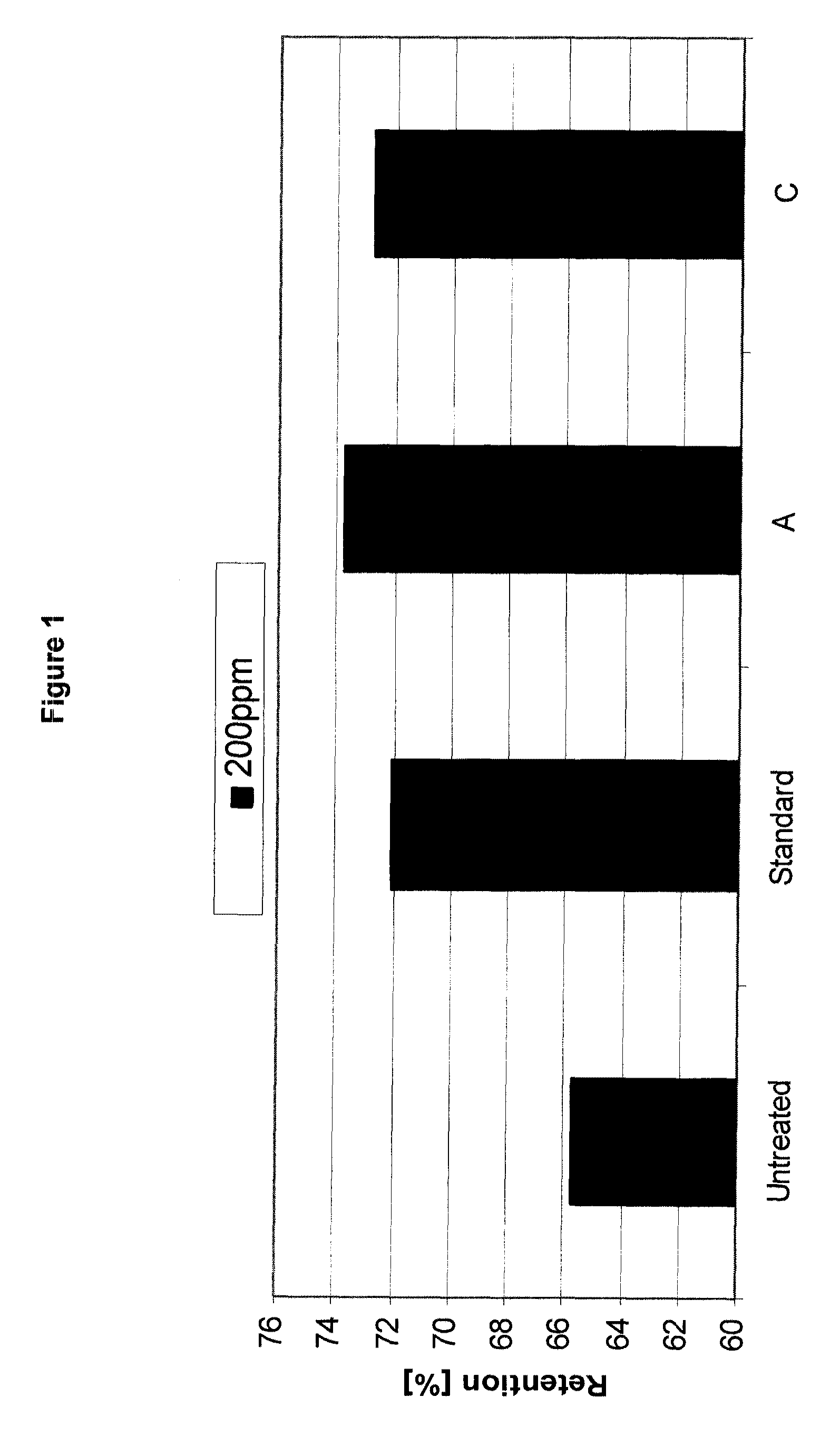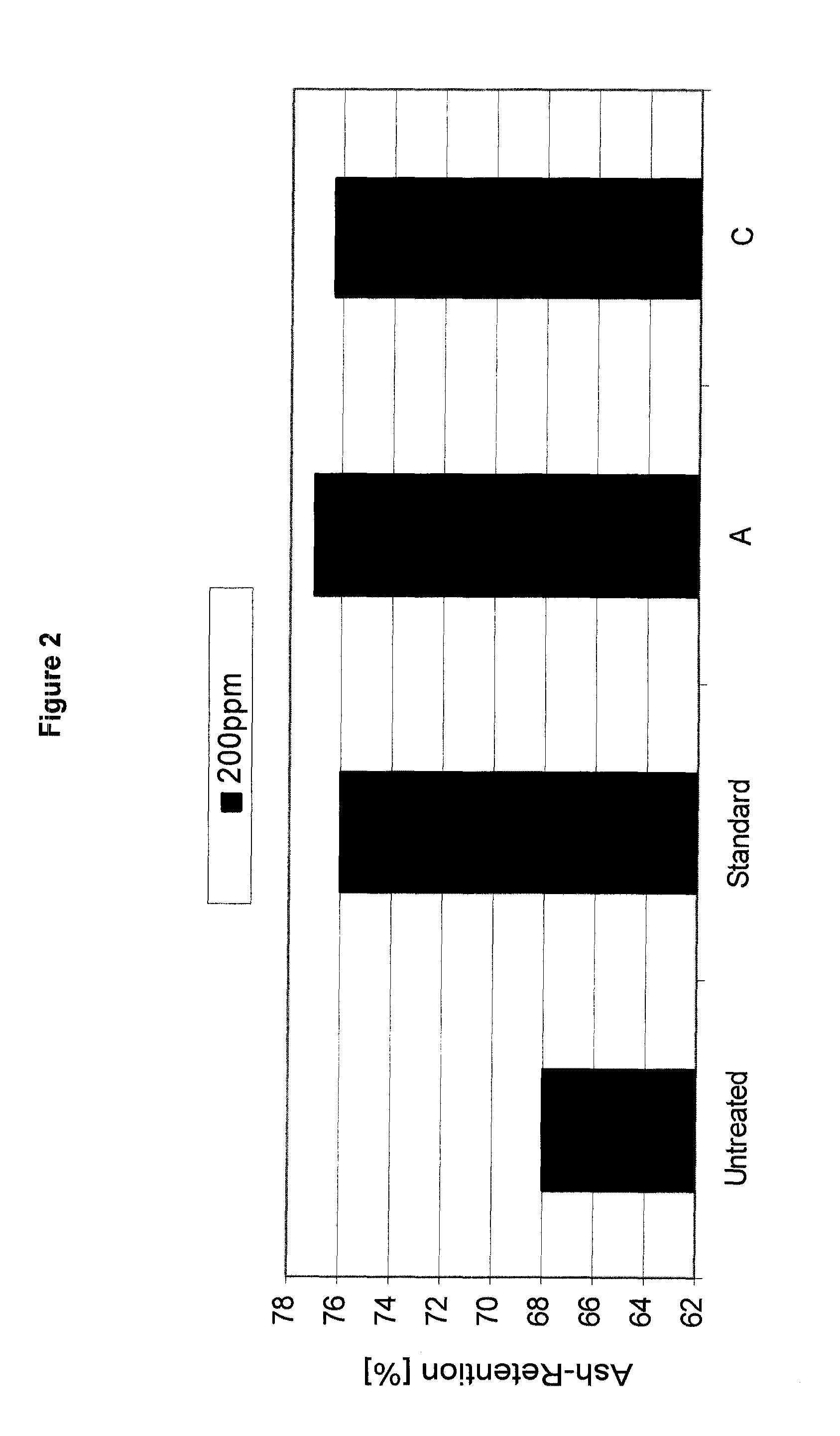Anionic cross-linked polymers in water-in-water polymer dispersions
- Summary
- Abstract
- Description
- Claims
- Application Information
AI Technical Summary
Benefits of technology
Problems solved by technology
Method used
Image
Examples
examples
[0270]The following examples further illustrate the invention but are not to be construed as limiting its scope.
Preparation of the Anionic Dispersant Polymer
[0271]At first, 350 g water and 236 g acrylic acid were weighed into a 2 L vessel. The acrylic acid solution was pre-neutralized with 77 g potassium hydroxide (45 wt %) up to a pH of 3.7. Then the monomer solution was sparked with nitrogen for 30 min by stirring. Subsequently, the aqueous solution was cooled down to 19° C. and the redox initiator system sodium peroxo-disulphate and hydrogen peroxide as well as mercaptoethanol were added to the solution. After reaching tmax an additional portion of V-50 was given to the product for residual monomer burn out. Now the product was stirred for 2 h at 90° C. After that the final aqueous product was cooled down to <50° C. and neutralized with potassium hydroxide (45 wt %) up to a pH of 7.0.
Preparation of the Anionic Aqueous Dispersion
[0272]Firstly, 272 g acryl amide (50 wt %), 0.5 g Ve...
experiment 1
Method
[0273]Furnish type: 100% recycled paper, 3000 ppm lignosulphonate, GCC added as filler.
[0274]The laboratory trials were performed using a DFR 04 from BTG Mutek GmbH. 1000 mL of a 0.5% furnish was mixed by 800 rpm for 5 seconds, when the polymer was added, and the furnish sheared for an additional 10 seconds at 1000 rpm. The anionic product was added and the mixing continued for 10 seconds at 500 rpm and the retention was performed according to the supplier of the device.
[0275]FIGS. 1 and 2 show the positive impact on the retention and ash retention at 550° C. compared to untreated furnish (dosed after addition of 400 ppm standard cationic granular polymer).
PUM
| Property | Measurement | Unit |
|---|---|---|
| Time | aaaaa | aaaaa |
| Molar mass | aaaaa | aaaaa |
| Dispersion potential | aaaaa | aaaaa |
Abstract
Description
Claims
Application Information
 Login to View More
Login to View More - Generate Ideas
- Intellectual Property
- Life Sciences
- Materials
- Tech Scout
- Unparalleled Data Quality
- Higher Quality Content
- 60% Fewer Hallucinations
Browse by: Latest US Patents, China's latest patents, Technical Efficacy Thesaurus, Application Domain, Technology Topic, Popular Technical Reports.
© 2025 PatSnap. All rights reserved.Legal|Privacy policy|Modern Slavery Act Transparency Statement|Sitemap|About US| Contact US: help@patsnap.com



